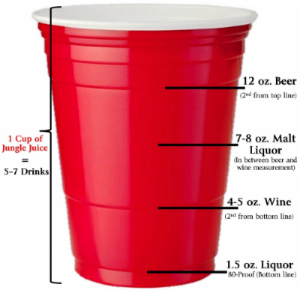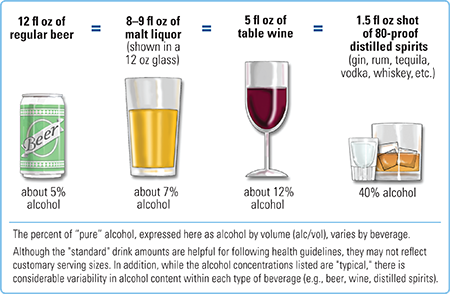Alcohol and Other Drugs
Alcohol
Many college students see drinking alcohol as part of the “normal” college experience or as a ritual integral to their time here at MSU. Some students come to college with established drinking habits while others come with no experience at all. It is important to note that many students do not drink during college, typically more than you would think. A number of factors can exacerbate newly formed or longstanding drinking habits in this age group. Certain aspects of college life, such as unstructured time, the widespread availability of alcohol, inconsistent enforcement of underage drinking laws, and limited interactions with parents and other adults, can intensify the problem. In fact, college students have higher binge-drinking rates and a higher incidence of driving under the influence of alcohol than their non-college peers. Of note, the first 6 weeks of one’s freshman year are a vulnerable time for heavy drinking and alcohol-related consequences because of student expectations and social pressures at the start of the academic year. (adapted from NIH, 2015)
Prevalence of Alcohol Use:
- Prevalence of Drinking: 58% of full-time college students ages 18–22 drank alcohol in the past month compared with 48.2% of other persons of the same age.
- Prevalence of Binge Drinking: 37.9 % of college students ages 18–22 reported binge drinking in the past month compared with 32.6% of other persons of the same age.
- Prevalence of Heavy Alcohol Use: 12.5% of college students ages 18–22 reported heavy
alcohol use in the past month compared with 8.5% of other persons of the same age.
- Data from the National Survey on Drug Use and Health, 2015
Consequences of Alcohol Use
- Approximately 1,800 college students between the ages of 18 and 24 die each year from alcohol-related unintentional injuries, including motor vehicle crashes.
- Approximately 696,000 students between the ages of 18 and 24 are assaulted each year by another student who has been drinking.
- About 97,000 students between the ages of 18 and 24 report an alcohol-related sexual assault or date rape each year.
- Approximately 1 in 4 college students report academic consequences from drinking, including missing class, falling behind in class, doing poorly on exams or papers, and receiving lower grades overall.
Knowing how much alcohol constitutes a “standard” drink can help you determine how much you are drinking and understand the risks. The following amounts constitute one standard drink:
- 12 fluid ounces of beer (about 5% alcohol)
- 8 to 9 fluid ounces of malt liquor (about 7% alcohol)
- 5 fluid ounces of table wine (about 12% alcohol)
- 5 fluid ounces of 80-proof distilled spirits (40% alcohol)


- NIAAA defines binge drinking as a pattern of drinking that brings blood alcohol concentration (BAC) levels to 0.08 g/dL. This typically occurs after 4 drinks for women and 5 drinks for men—in about 2 hours.
- The Substance Abuse and Mental Health Services Administration (SAMHSA) defines binge drinking as 5 or more alcoholic drinks for males or 4 or more alcoholic drinks for females on the same occasion (i.e., at the same time or within a couple of hours of each other) on at least 1 day in the past month.
What is “Heavy” Alcohol Use:
- SAMHSA defines heavy alcohol use as binge drinking on 5 or more days in the past month.
Alcohol Use Disorder (AUD):
- AUD, in part, reflects an impaired ability to stop or limit alcohol use despite adverse social, occupational, or health consequences. AUD can range from mild to severe, and recovery is possible regardless of severity.
Read these questions and answer "yes" or "no":
- Do you drink alone when you feel angry, stressed, or sad?
- Does your drinking ever make you late for work, miss school assignments, or skip class?
- Does your drinking worry your friends or family (i.e., has anybody suggested that you cut-back)?
- Do you ever drink after telling yourself you won't?
- Do you repeatedly drink more than what you initially intended?
- Do you ever forget what you did while you were drinking?
- Do you get headaches or have a “hang-over” after you have been drinking?
If you answered “yes” to one or a number of the questions above and are concerned that your alcohol use is interfering with your life and/or how you would like to feel, please take a moment and complete this free and confidential screening.
- Write down your reasons for cutting down or stopping:
- Pros: Why do you want to drink less? For instance, you may want to improve your health, sleep better, perform better at school, or get along better with your family or friends. How might less alcohol improve your well-being?
- Cons: What are some reasons for why you might not want to drink less? What function or purpose has alcohol use had for you (i.e., what’s it doing for you…and any perceived “negative consequences” from drinking less)?
- Having a Pro-Con list is a helpful way to gain awareness and insight into the role alcohol has in your life and can move you toward more intentional decisions about how much you drink, and why.
- Set a drinking goal:
- Choose a limit for how much you will drink. You may choose to cut down or not to drink at all. If you are cutting down, hold yourself to a set limit (e.g., 1 drink per day; 3 drinks this Friday night).
- If you want to cut back on your drinking, start by keeping track of every drink. Record the number of drinks you have each day in a journal or on your phone. It may also be helpful to write down events surrounding when you drink (i.e., who are you with? How did you feel before and after you drank, and any consequences to your drinking such as a hangover, missing class, etc.)
- Clear Values: Know what you find valuable and meaningful. In other words, what do you want to be about as you go through life? Does your current alcohol use align with this? If not, then what behaviors are consistent with what you value and who you want to be? Practice those behaviors on a daily basis. Speaking with a counselor can help with this.
- Social Support: Invite trusted friends and family to provide you with support, encouragement, and accountability.
- Lean into people and activities not associated with alcohol/substance use that can provide you with fun, challenge, social connection, and relief from stressors.
- Consult with a Professional
- If your drinking is negatively impacting your life and you are struggling to make wanted changes on your own, then professional help is available. Some mental health professionals are trained to treat addiction and problematic alcohol/substance use. Please do not hesitate to make an appointment with us at CPS by walking-in or calling (406) 994-4531.
Having fun (while staying safe):
- Make sure there are nonalcoholic beverages and non-salty food available. Let the main attraction of the party be something other than alcohol.
- Provide and engage in non-drinking games (e.g., karaoke).
- Drink water throughout the night.
- Be aware of what is happening at the party! Discourage excessive use of alcohol, such as competitive drinking games. Intervene if you see guests hurting themselves or others.
- Leave if you are not feeling comfortable or safe. Keep your friends close – avoid going to parties alone.
- If you notice someone getting drunk and losing control, stop serving them alcohol. Offer a nonalcoholic beverage and food to divert attention from drinking.
When The Party's (almost) Over:
- Do not combine drinking with driving.
- Are there designated drivers available? This should be decided upon before the night begins.
- Intervene if you see someone intoxicated who wants to drive home. Take the keys away and offer an alternative way home (e.g., cab, bus, Uber, ride with a friend or have the person sleep over).
